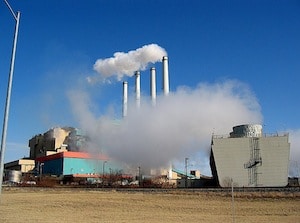Two separate reports released this week offer a grim look at the state of air quality in North America. The continent already produces 6% of the world’s greenhouse gas (GHG) emissions from power plants, resulting in an array of health and environmental problems.
According to a joint report by the Environmental Integrity Project (EIP), EarthJustice, and the Sierra Club, the situation in America is getting worse. Their report rated the top 5 worst states for toxic power plant emissions. Some of the chemicals used to rank the states’ emission status included chromium, arsenic, lead, and mercury. These represent four of the most toxic heavy metals found in power plant emissions.
The report, titled “AMERICA’S TOP POWER PLANT TOXIC AIR POLLUTERS” listed the 5 worst states as follows:
Pennsylvania (#1 rankings for arsenic and lead)
Ohio (#2 rankings for mercury and selenium)
Indiana (#4 rankings for chromium and nickel)
Kentucky (#2 for arsenic)
Texas (#1 rankings for mercury and selenium)
This report comes as the U.S. EPA is working on new standards for power plant emissions. The agency is under a court order to establish new emission standards, but action on air pollution standards has stalled, thanks to an attempt by the Republican-controlled Congress to strip the EPA of their court-granted authority to regulate air pollution.
In addition to the toxic metal rankings, the report made numerous other startling discoveries:
Electric power plants comprise a relatively small number of facilities, but, their toxic emissions dwarf other industrial sectors.
Whereas literally thousands of chemical plants and other industries reported toxic emissions to EPA’s Toxics Release Inventory in 2010, only a few hundred power plants reported mercury and hydrochloric acid emissions, and only 59 power plants reported selenium emissions. Yet, despite the relatively small number of facilities, electric utilities emit more arsenic, mercury, selenium, and hydrochloric acid than any other industrial sector, and the utility industry emits the second highest total emissions of chromium and nickel of all industry sectors.
The electric power industry emits almost two-thirds of the nation’s industrial arsenic emissions.
Only 59 power plants representing the entire electric utility sector reported selenium emissions in 2010. Yet, the utility industry is still the top selenium emitter of all industry sectors, releasing 250,220 pounds, or 125 tons, of selenium into the nation’s air. That’s 76.3 percent of all industrial selenium emissions.
Some states have seen major drops in reported emissions of dangerous heavy metals, while other states have made little progress to reduce these air toxics.
From 2009 to 2010, power plant lead emissions actually increased in 16 states.
Pennsylvania – by far the largest state in terms of power plant arsenic emissions – has actually increased its reported power plant arsenic emissions over the past decade, from 15,861 pounds reported in 2001, to 17,666 pounds of arsenic reported in 2010.
While the findings of that report do not bode well for the United States, the situation throughout the rest of North America doesn’t look better. The Commission for Environmental Cooperation’s (CEC) new report – North American Power Plant Air Emissions – examines the emissions of carbon dioxide, nitrogen oxides, methane, sulfur dioxide, mercury, and particulate matter from coal-burning power plants across the continent. CEC’s report details emissions on a plant-by-plant basis, examining which areas are at a higher risk based on what nearby power plants are pumping into the atmosphere.
From CEC’s report:
These pollutants—especially sulfur dioxide, mercury and greenhouse gases—are linked to a range of environmental and public health problems facing the people of North America today, including acid rain, smog, asthma, and global climate change. For sulfur dioxide alone, the major contributor to acid rain, fossil-fuel power plants are responsible for 71 percent of reported emissions from industrial facilities across North America.
North America’s fossil-fuel electricity generating sector is a major contributor to emissions of greenhouse gases, representing 33 percent of North American and six percent of global emissions, mainly carbon dioxide. The combustion of coal accounts for the bulk of these emissions. Coal-fired power plants in Canada and the United States, along with Mexican oil-fired facilities, produced the largest emissions overall of greenhouse gases (GHGs), particularly CO2, although in Canada and Mexico, natural gas-fired power plants were major sources of methane as well as nitrous oxide, both extremely potent greenhouse gases.
The information contained in these reports is nothing to be hopeful about. And when coupled with information about agencies being prevented from doing their jobs to control these toxic emissions, they paint a very bleak picture for the future of North American public health.
Subscribe to our newsletter
Stay up to date with DeSmog news and alerts







